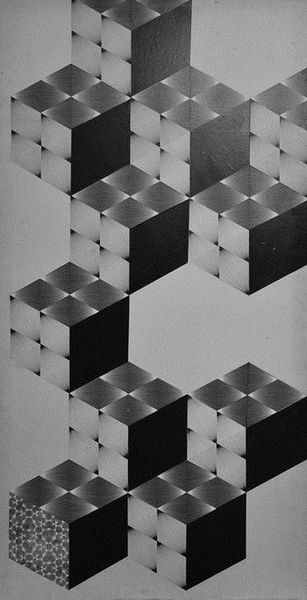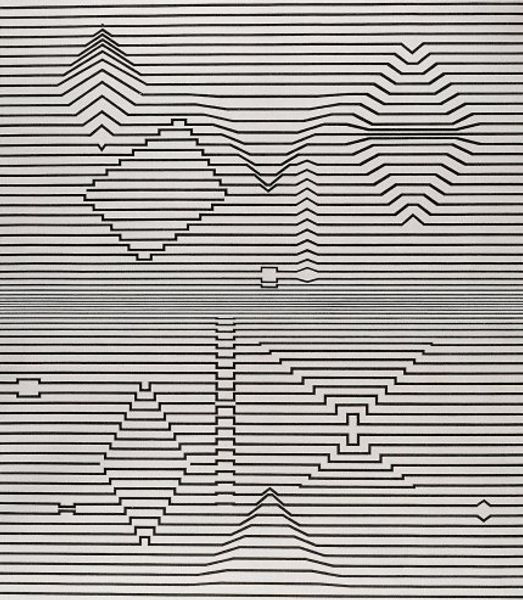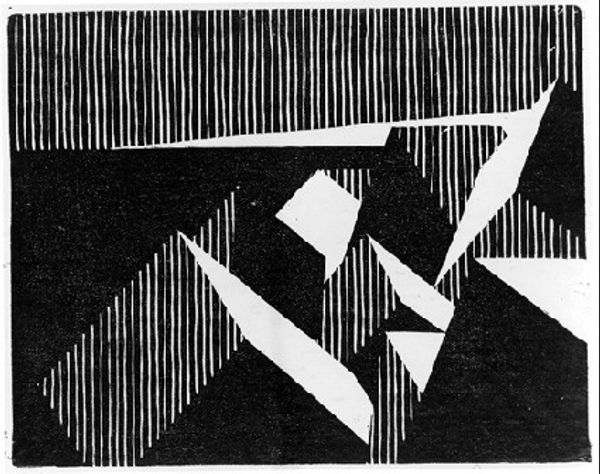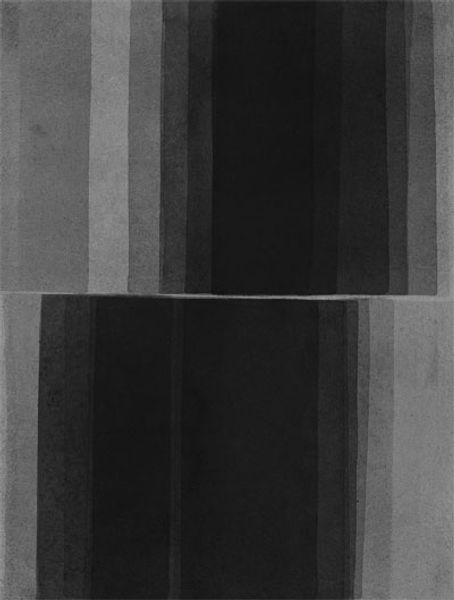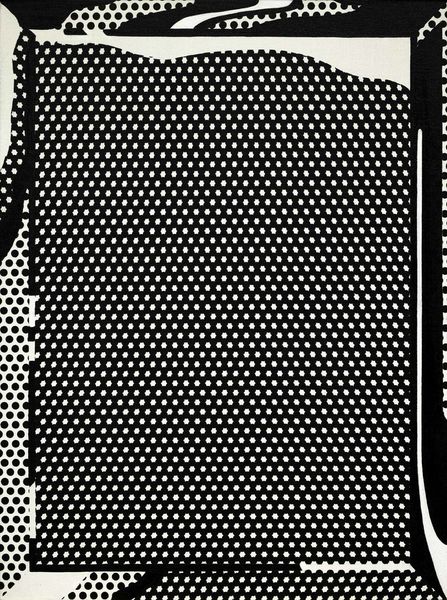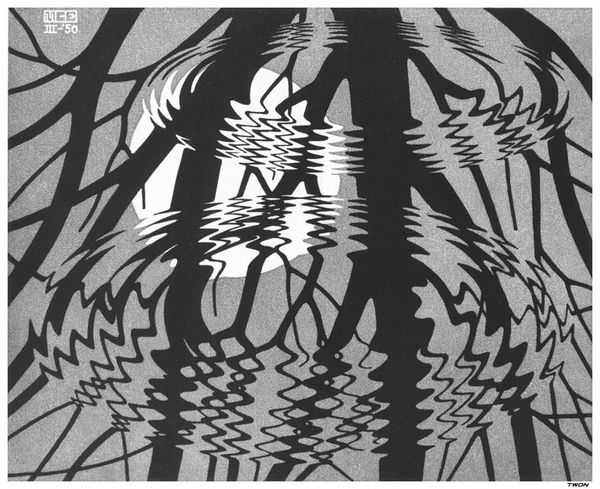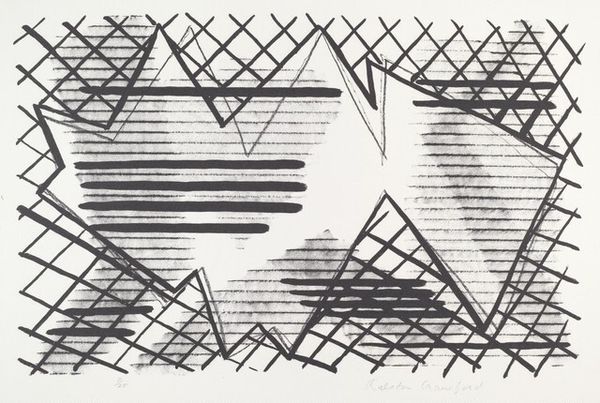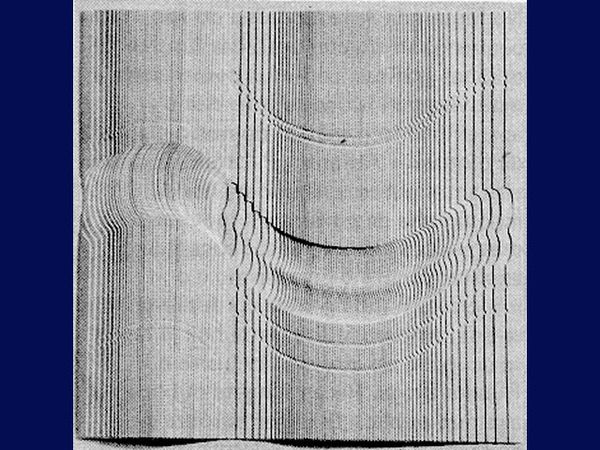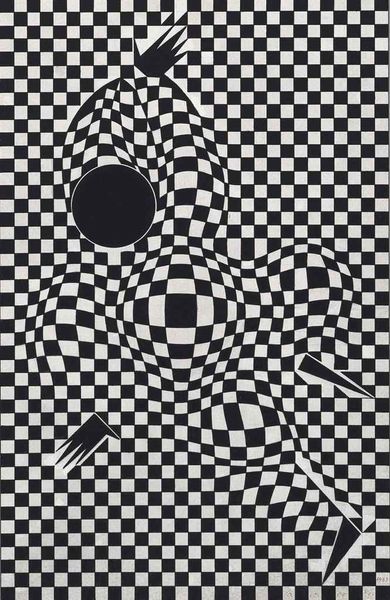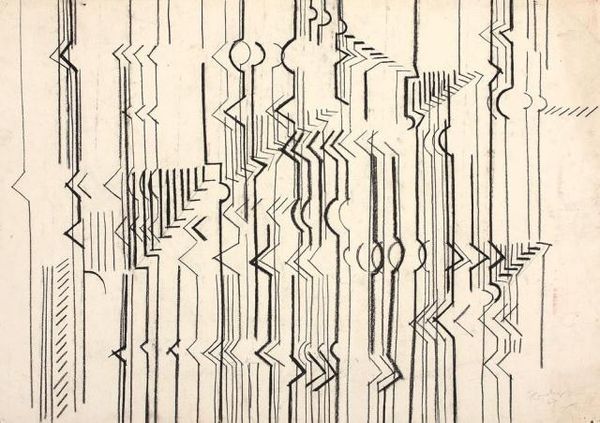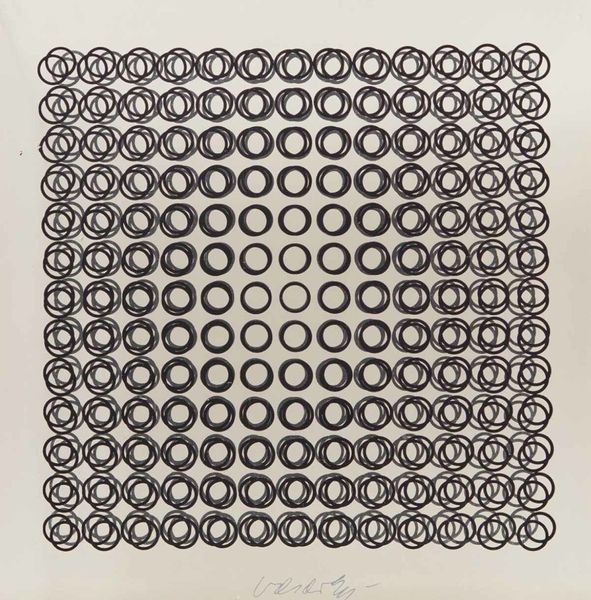
#
natural stone pattern
#
pattern
#
geometric pattern
#
subtle pattern
#
abstract pattern
#
repetitive shape and pattern
#
organic pattern
#
repetition of pattern
#
vertical pattern
#
pattern repetition
#
layered pattern
#
monochrome
Copyright: Constantin Flondor,Fair Use
Constantin Flondor made this optical artwork, named Undulatory Mirage, using ink. Flondor was part of a generation of Romanian artists who sought new means of expression under the restrictive cultural policies of the communist regime. Images like this used the visual language of Op Art to question the nature of perception and reality. The repetitive geometric patterns, characteristic of Op Art, generate a dynamic visual experience, challenging the viewer's sense of stability. As a movement, Op Art, which became popular in the West in the 1960s, was politically neutral. But its subversive nature and its popular appeal made it a useful tactic for artists behind the Iron Curtain to challenge authority and find freedom. To fully appreciate this work, one could explore Romanian art journals from the period and the history of cultural exchange during the Cold War. The meaning of such art depends on its historical and institutional context.
Comments
No comments
Be the first to comment and join the conversation on the ultimate creative platform.
